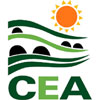San Falcione
Menù> Da visitare
Jazzo Gattini (centro visite)
Visitare Parco Murgia Materana
Masseria Radogna (centro visite)
Il villaggio neolitico
San Falcione
San Biagio
Sant’Agnese
Madonna delle Tre Porte
Madonna delle Croci
San Nicola all’Appia
SAN FALCIONE
Tra il IX e X secolo il modello ricorrente di chiesa rupestre è quello bizantino, con un’aula rettangolare o quadrata con pareti lisce da cui si diparte l’area presbiteriale tramite due arcate sorrette da un pilastro centrale.
A questo gruppo appartiene la chiesa rupestre di San Canione, meglio nota come San Falcione, riconducibile alle prime comunità monastiche italo-greche insediatesi nell’area intorno al IX secolo, e che quindi è tra le chiese rupestri più antiche di Matera. Collocata in una piccola lama, è subito riconoscibile per il muro perimetrale fatto costruire solo nell’800 dai conti Gattini, che adibirono il complesso grottale ad ovile. Nella chiesa, il cui piano di calpestio risulta ribassato rispetto all’originale, sono ancora visibili due affreschi di San Nicola, uno sul pilastro di ingresso al santuario e l’altro sulla parete destra della chiesa.
Nella parete che ospita l’altare un tempo era leggibile l’affresco della Presentazione di Gesù al Tempio. Erano ben visibili S. Giuseppe, la Madonna col Bambino, S. Simeone e la profetessa Anna che con una mano benediceva il Bambino e con l’altra reggeva un carteggio con la scritta in greco: “τοũτο Βρέφος τόν ουρανόν κάι τήν (γήν) εδημιουργήςε”, che vuol dire: “Questo Bambino creò il cielo e la terra”.
Dalla presenza di quest’affresco si può desumere che nella chiesa venisse celebrato il culto della “Presentazione di Gesù al tempio” che nella tradizione cristiana ed ebraica viene officiata nel quarantesimo giorno dalla nascita di Gesù, cioè il 2 di febbraio. Durante questa festa, comunemente nota come “La Candelora” ancora oggi i fedeli ripetono il rito dell’offerta delle candele alla divinità al termine di una processione con l’immagine di Maria e del Bambino.
E proprio il complesso di grotte e nicchie scavate che sono diffuse intorno alla chiesa costituiva una delle tante pecchiare diffuse sulla murgia, nei Sassi e nell’intero agro materano fino al XIX secolo, cioe’ un apiario. Nelle nicchie, al riparo della pioggia, dei venti freddi provenienti da nord e dell’eccessivo caldo estivo, venivano collocate le arnie costruite in pietra tufacea e legno di ferula. Tale attività era di enorme importanza sia per la produzione del miele che della cera utile proprio alla realizzazione delle candele.
All’esterno della chiesa si rintracciano numerose tombe, altre potrebbero essere al suo interno e sul pianoro sovrastante.











